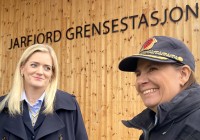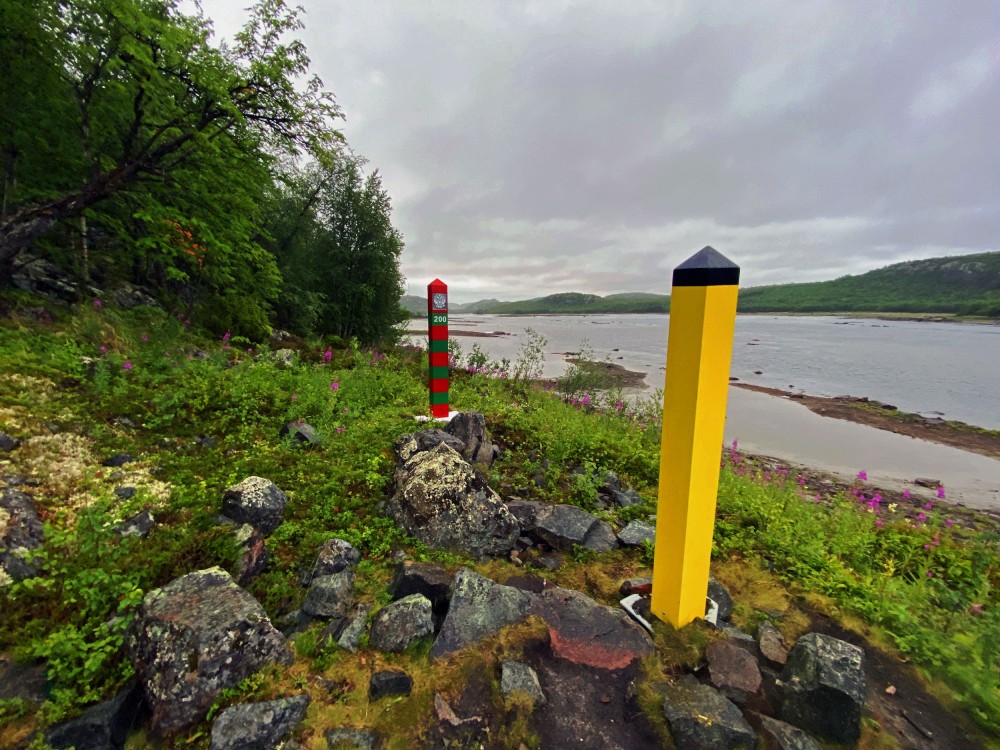
Another illegal crossing, Norway considers new means at Europe’s last unbarred border with Russia
ADVERTISEMENT
Not much prior bushwalking experience was necessary for the person that on July 23 left Norway for Russia. In some places, the actual borderline is just a few hundred meters from the main road. From smaller roads, you get even closer.
The illegal crossing was not reported in public, but an undisclosed source confirmed the incident to the Barents Observer.
Russia’s Federal Security Service (FSB), in charge of border control, will not detail to the Barents Observer by phone. Email request remains unanswered. Neither has the Procurator’s Office in Murmansk announced anyone charged for violating Russia’s strict border laws.
The fellow in July was not the first mysterious bushwalker this year that avoided spotlight, the Barents Observer was informed.
Update August 16: After the Barents Observer published this story, the Police in Finnmark sent the following press statement:
The police can confirm that a person crossed the border illegally at the end of July from Norway to Russia. Illegal border crossings sometimes happen, but since Russia’s invasion of Ukraine, we have had three cases with people crossing over to the Russian side illegally without being returned.
“We feel that the war leads to an increased interest to the border areas, and that more people are attracted or fascinated by this and seek out to the border areas with the desire to go to Russia. Three people have entered Russia illegally from Norway. The police and the border guard have prevented a number of cases and deported people who have expressed a desire to cross over to Russia illegally,” says head of Section forBorder and Immigration Control, Gøran J. Stenseth, to the Barents Observer.
ADVERTISEMENT
On the Norwegian side, other comments are restrained and careful.
“I have no further public information that can answer those questions,” says Border Commissioner Jens Arne Høilund when asked about the weird July incident, and the number of people that have made it over the border to Russia without being returned.

The two countries have an agreement on sending back people who unintentionally cross the border. A greater challenge is those who on purpose decide to make it into Russia.
In late April, a Norwegian citizen, whose identity is known to authorities, walked in the snow over to Russia. The person was not returned by FSB, but detained and now risks jail sentence on the Kola Peninsula.
Motivations to avoid the official checkpoints could be different. Some are denied visas for normal entry. Others might have fixed ideas and beliefs to either join the war or stop it. Russia also receives asylum seekers, although the Arctic route from Europe seems a bit odd. Then there are Moscow’s intelligence operatives, that despite fictitious identities are in need of leaving the Schengen area without passing exit-passport checks.
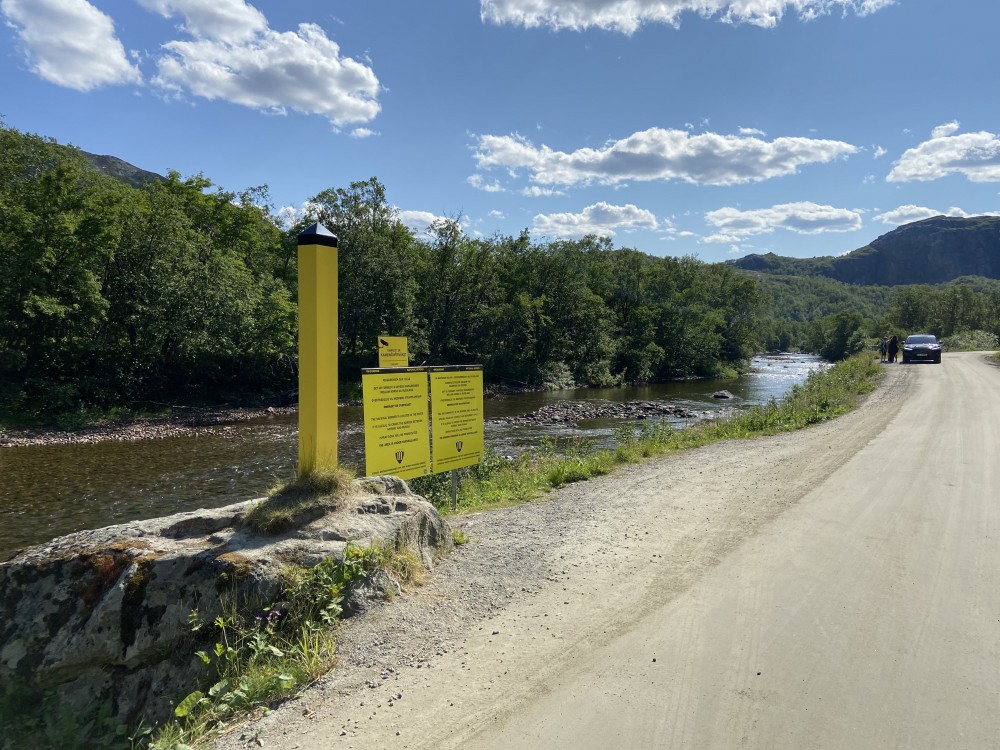
A reason to choose the northern route is what happens along Europe’s other eastern borders to Russia. Norway is steadily becoming the only country in Schengen-Europe nearly without barriers hindering people’s unauthorized entry or exit in the terrain.
Europe’s new eastern physical barrier, not seen since the days of the former Iron Curtain, includes more than 900 kilometers of fences towards Russia and Belarus, according to a report by the European Parliament.
- In January 2022, Poland began building razor wire fence along the border with Belarus and Kaliningrad.
- Lithuania build a fence in 1999, which recently has been reinforced and now stretches about 500 km.
- In 2019, Latvia completed a 90 km fence. A 54 km extension continued in 2022.
- Estonia began building a fence in 2018. A second extended barrier came in 2021.
- Finland’s construction of steel fences with barbed wire started in 2023 and will continue till 2026.
Finland’s plan is to build fences at the 200 km most exposed parts of its about 1,300 km border with Russia. As before, the country has a restricted zone extending up to 3 km from the borderline.
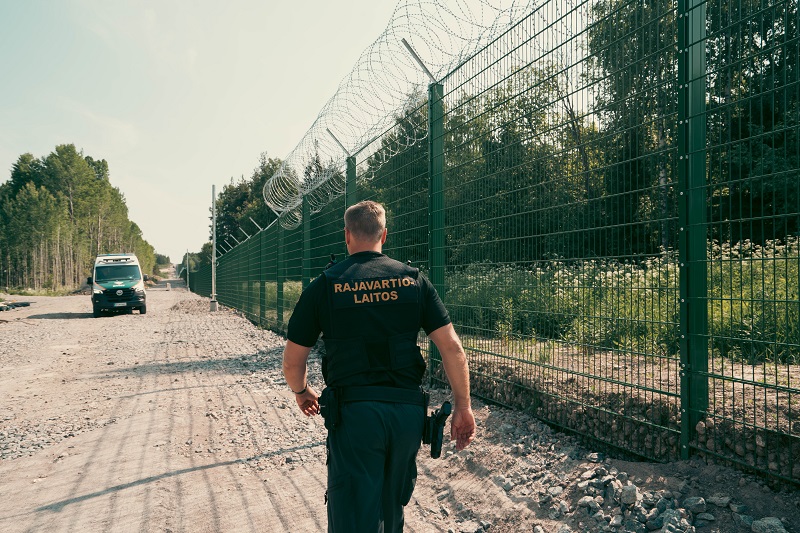
Norway, in comparison, has no restrictions on movement. Anyone can walk straight up to the borderline. One step over, though, will be fined by police for breaching the state border law.
At Storskog checkpoint, a 200-meters fence was erected in 2016 following the Arctic refugee crisis the year before. The Norwegian-Russian border is 198 km, of which 2/3 follows in rivers.
“In general, I can say that the mutual dialogue between Norwegian and Russian authorities about various episodes on the Norwegian-Russian border works well,” says Commissioner Jens Arne Høilund.
“When something happens, regardless of what it is, the actual circumstances are clarified and then measures and solutions are discussed to best avoid such cases from recurring.”
Norwegian and Russian border officials meet one or two times a year for official consultations. A hotline between the two border commissioners is used to solve urgent affairs, such as illegal border crossings.
“If people cross the border, they become subject to the jurisdiction and rights of the country they cross to and risk prosecution and custody accordingly,” Høilund says.
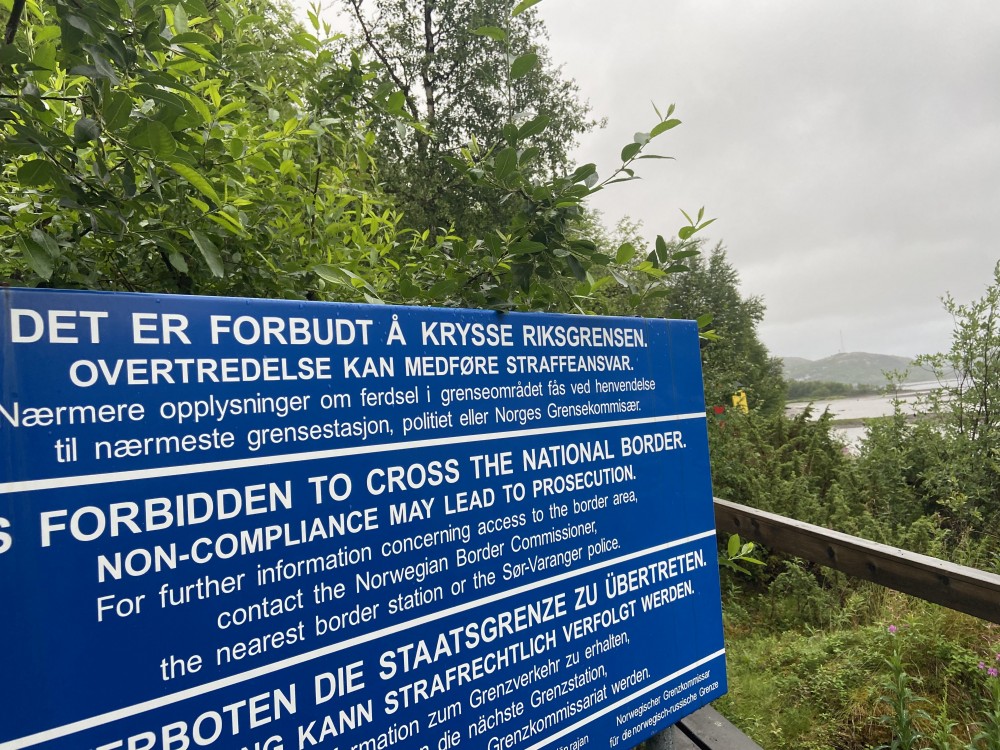
New measures under consideration
The Barents Observer is informed that Norwegian authorities keep a close eye on what happens along other countries’ borders with Russia.
Acting head of the Police Directorate’s Preparedness Section, Jørn Schjelderup, will not say directly that Norway plans for building more physical barriers, but more than hints that it could come.
“The need for security measures at the border will always be assessed in light of the situation internationally. As of today, we have not recommended any extensive upgrading of security at the border,” he says.
People exiting Norway for Russia in the terrain, however, is a new phenomenon. New measures are in main supposed as preparedness to hinder illegal entries into the Schengen area.
Asylum seekers
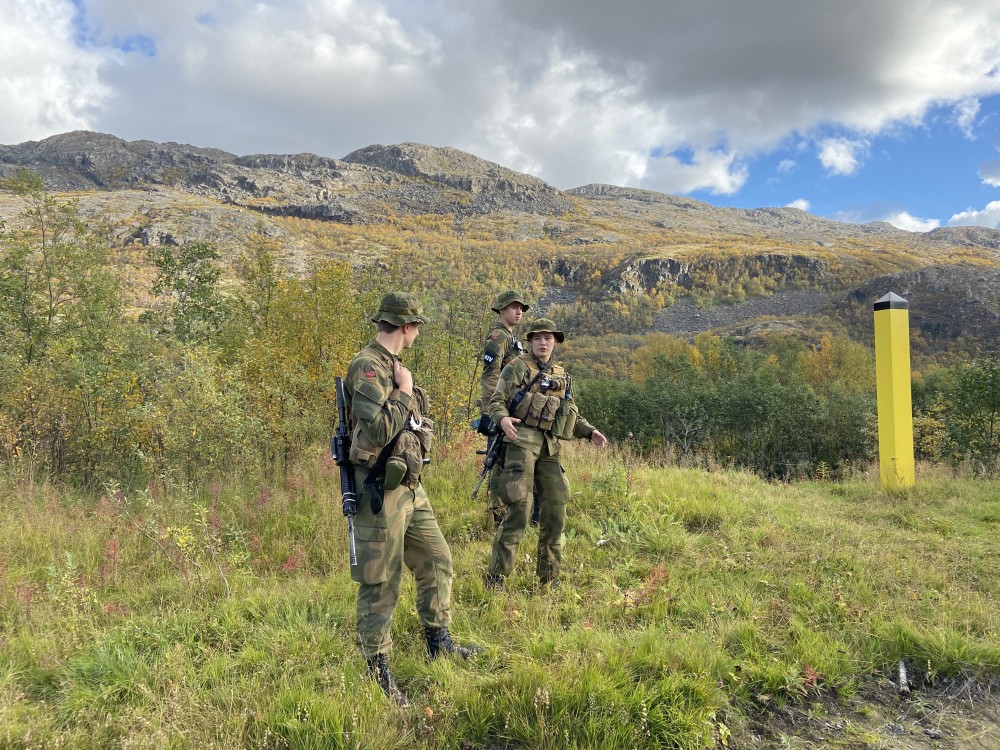
There are few refugees or migrants that manage to run over to Norway in the north as FSB has a very strict regime. That includes barbed wire fences, video surveillance, checkpoints on the road between Murmansk and the Norwegian or Finnish border, and patrols in the terrain with dogs.
Even Russian citizens need special permission to enter FSB’s border zone. Towns like Nikel and Zapolyarny are restricted.
Most third-country citizens aiming for Europe via the Arctic route are stopped by FSB. Many end up in Russian jail.
Since Russia’s full-scale war on Ukraine, though, a few have made it through the barbed wire fences and over to Norway, like the one that came in the remote wilderness at Korpfjell in June last year. Another three came in August and asked for asylum. Nationality or identity is not made public when people request asylum.
Wagner mercenary
One young man that ran over the ice on the Pasvik River during polar night in January made himself known as he told about his dramatic escape to media.
Andrei Medvedev, who now lives in Oslo, has since then been back in Kirkenes, the border town, two times and talked with the Barents Observer about his escape. Medvedev was fighting for Wagner Private Military Corporation in Ukraine.
The 27-year-old mercenary fled north and managed to enter the heavily guarded border zone on the Kola Peninsula. Here, he jumped out of the car, climbed the barbed wire fence, and ran in deep snow a few hundred meters to safety. Norwegian military border guards detained him and brought him to the police station in Kirkenes from where he later the same day was taken to Oslo.

ADVERTISEMENT
The Barents Observer Newsletter
After confirming you're a real person, you can write your email below and we include you to the subscription list.







